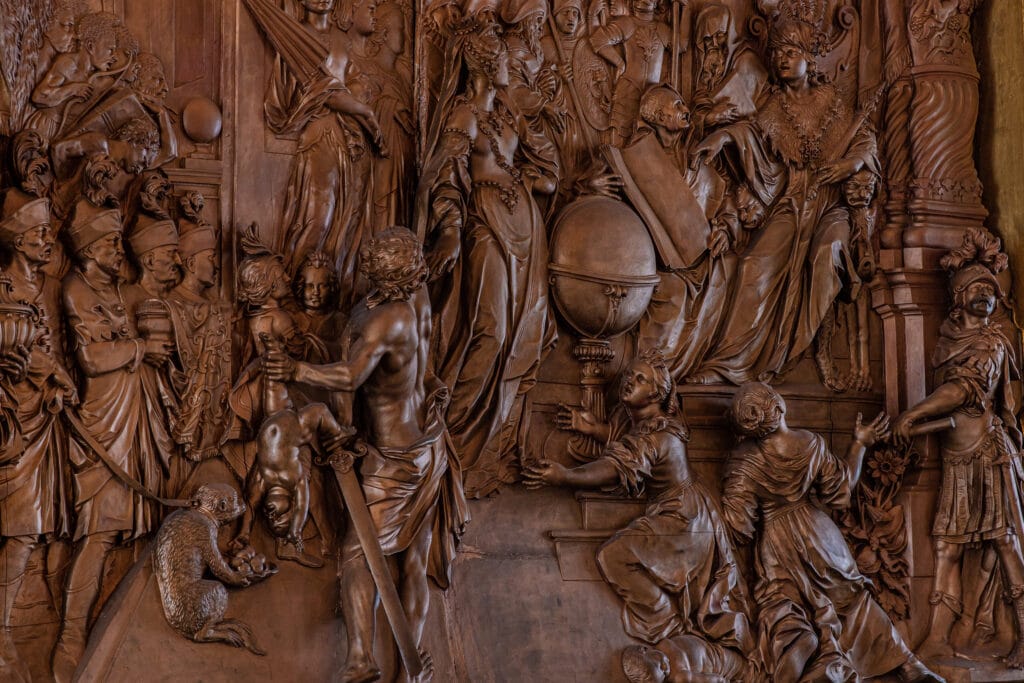
Sculptures and Reliefs
Sie sind hier: Home > Sculptures and Reliefs
The sculptures and reliefs in the Admont Monastery Library
There are 16 sculptures and two large reliefs by Josef Stammel (1695-1765) in the Admont Abbey Library.

It is likely that 60 of the 68 console busts of scholars, artists, poets, sculptors and sibyls on the bookcases were also made by him. Stammel was in the service of Admont Abbey for over four decades. He was a contemporary of Georg Raphael Donner and Bartolomeo Altomonte. He thus belonged to a generation of artists who led the late Baroque to its final climax. His works have a fascinating connection to the rest of the conception of the Admont library hall, which was characterised by the spirit of the Enlightenment. Josef Stammel's carvings are made of lime wood. With the exception of the gilded busts, they are bronzed and thus achieve a material illusion.
On the two narrow sides of the library hall, at the level of the gallery, there are two large reliefs. The relief on the south side depicts a well-known motif from the Old Testament: the "Solomonic Judgment" as the epitome of human wisdom. Jesus teaching in the temple is portrayed on the north side, serving as the New Testament counterpart and embodiment of divine wisdom. The nearly fully sculpted high reliefs in the medallion-like painted frames at the level of the gallery in the two outer halls depict a total of eight biblical figures: on the south side, representatives of the Old Testament, Moses and Elijah, facing them are the apostles Peter and Paul; on the north side, the four evangelists Luke, John, Matthew, and Mark.
On the upper floor of the central area, the personalised representations of the four virtues in the figures of women convey a thematic dialogue: Eternal truth (‘veritas eterna’), divine wisdom (‘sapientia divina’), prudence (‘prudentia’) and science (‘scientia’).
Also under the central dome is Josef Stammel's group of figures "The Four Last Things," dating from around 1755-60. The four larger-than-life standing figures are characterized by pronounced gestures and expressions. They represent Death, Resurrection (simultaneously Judgment), Hell, and Heaven. They embody a central eschatological theme of the Baroque era. In the face of death, the human traveler must confront the last things. During the divine judgment, it will later be decided whether heavenly glory or hellish damnation awaits them. The four sculptures have faced each other in the central space between columns and bookshelves since around 1800. However, they were not originally intended for this location. Instead, the "Universum" destroyed by the monastery fire stood in the center of the library.